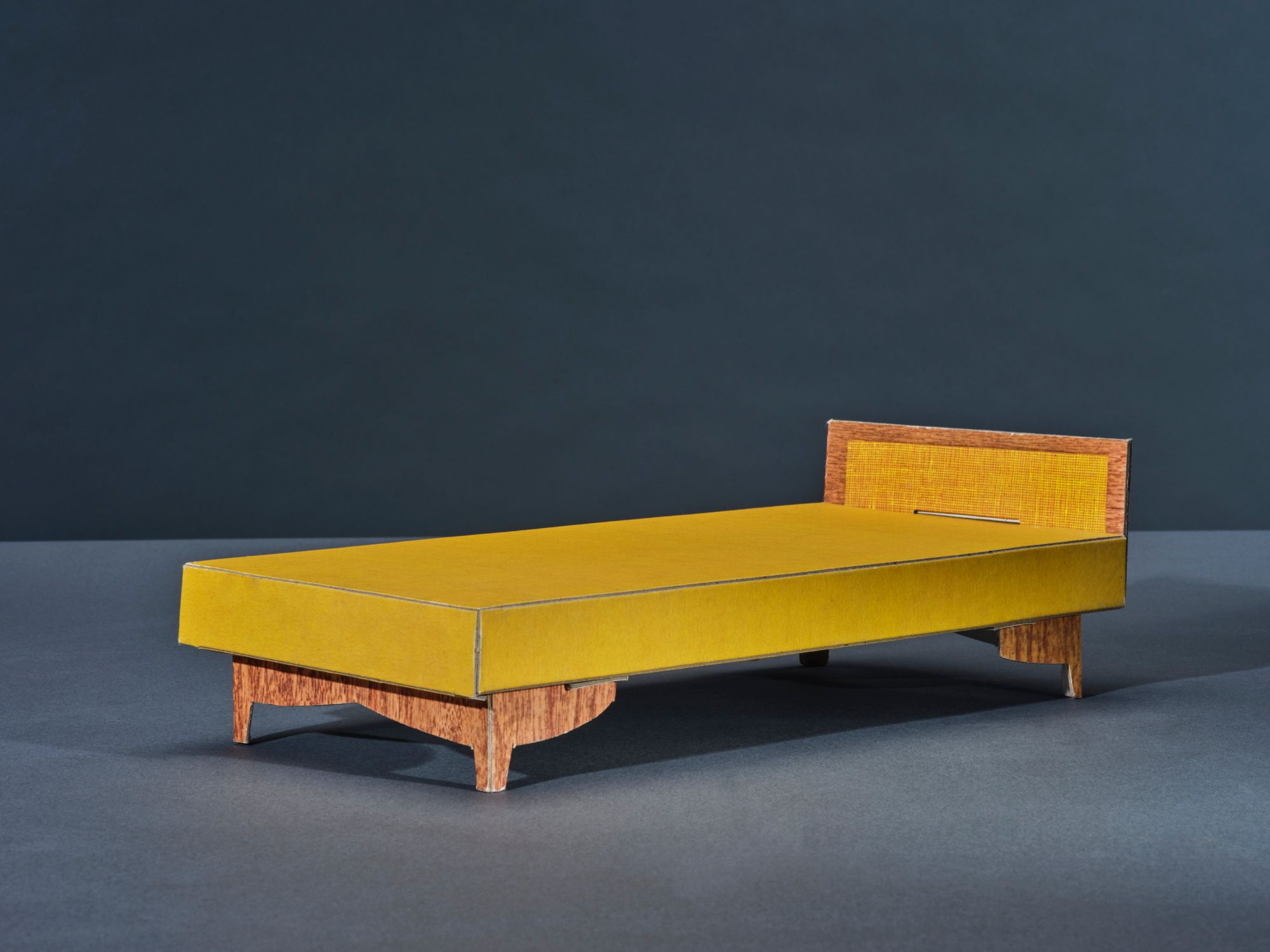
THE BARBIE DREAMHOUSE
AN ARCHITECTURAL SURVEY OF THE WORLD'S BEST-SELLING DOLLHOUSE
by Felix Burrichter, Whitney Mallett
Barbie's 1979 Dreamhouse photographed by Evelyn Pustka for PIN–UP
It’s been 60 years since Barbie first had a room of her own: the first Barbie Dreamhouse, released in 1962. To celebrate the occasion, PIN–UP made a book, showcasing six exemplary houses and their furniture that encapsulate the periods’ domestic ideals, richly quoting architecture and design history of the 20th and early 21st century. The first architectural survey of the world’s best-selling dollhouse.


1962
Barbie’s first Dreamhouse was a statement of independence. Foldable, portable, entirely in cardboard, here was a vision of a bachelorette pad for a liberated single woman — plenty of books on the shelves and no kitchen in sight. The clean lines of Barbie’s furniture reflect the period’s Modernist ideals of social progress and mass production, as espoused by Charles and Ray Eames, Herman Miller, and Florence Knoll. While the peekaboo, three-walled arrangement evokes the living room as seen on single-cam sitcoms like I Love Lucy, the gesture of Barbie opening up her private world came the same year Jaqueline Kennedy gave Americans an unprecedented TV tour of the White House.
“One thing the Eames house, Playboy apartments, and the Barbie Dreamhouse have in common: modern subjectivity is produced through décor. They’re built like sets for television programs. It’s a performance of domestic life for a public audience.” — Beatriz Colomina, architectural historian, theorist, and curator
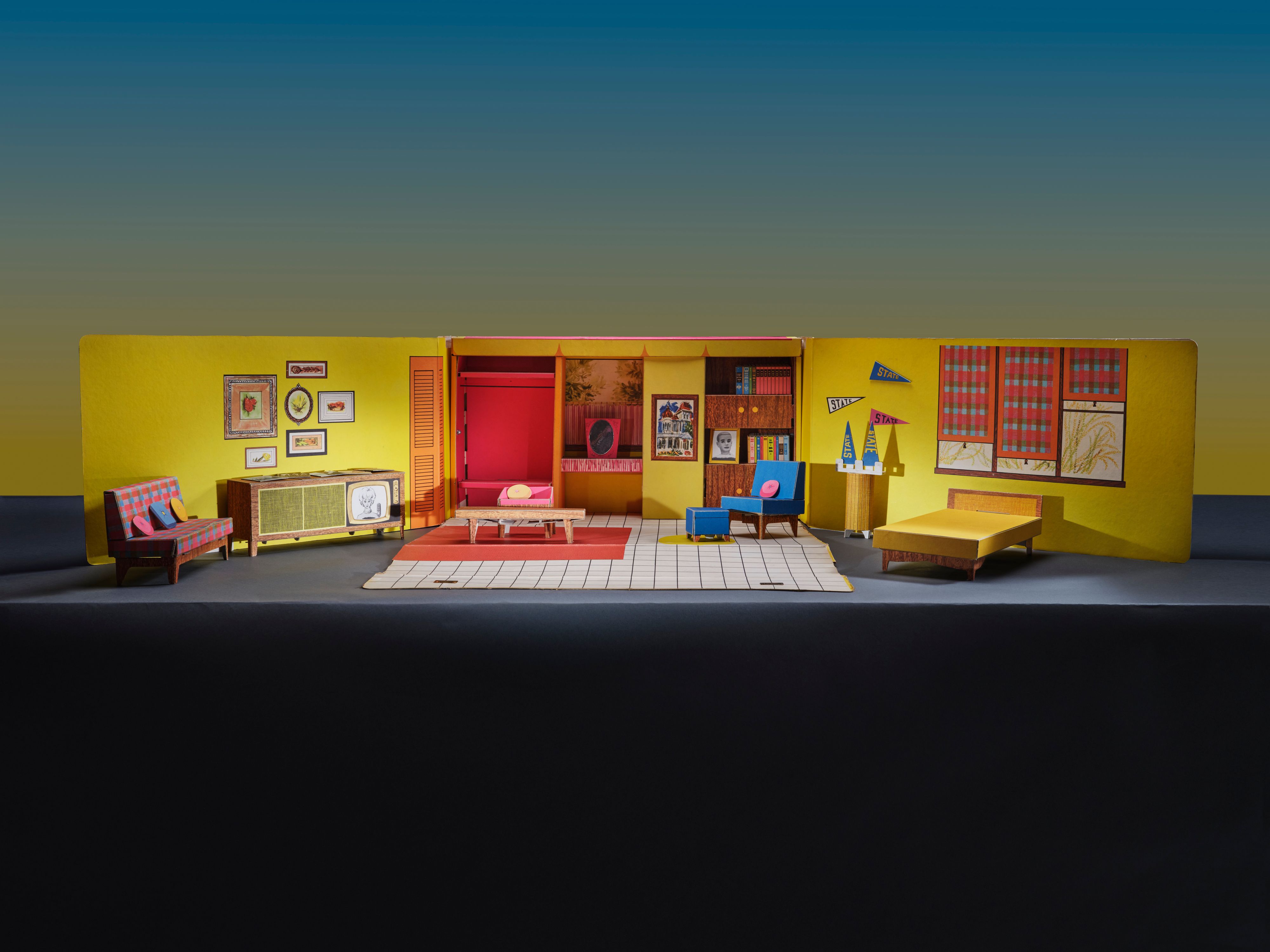
Barbie's first Dreamhouse photographed by Evelyn Pustka for PIN–UP
“The Barbie Dreamhouse is a sort of primer for predetermined single-girl affluence, while also paying homage to the all-American tendency of remixing status symbols through popular culture.” — Alexandra Cunningham Cameron, curator
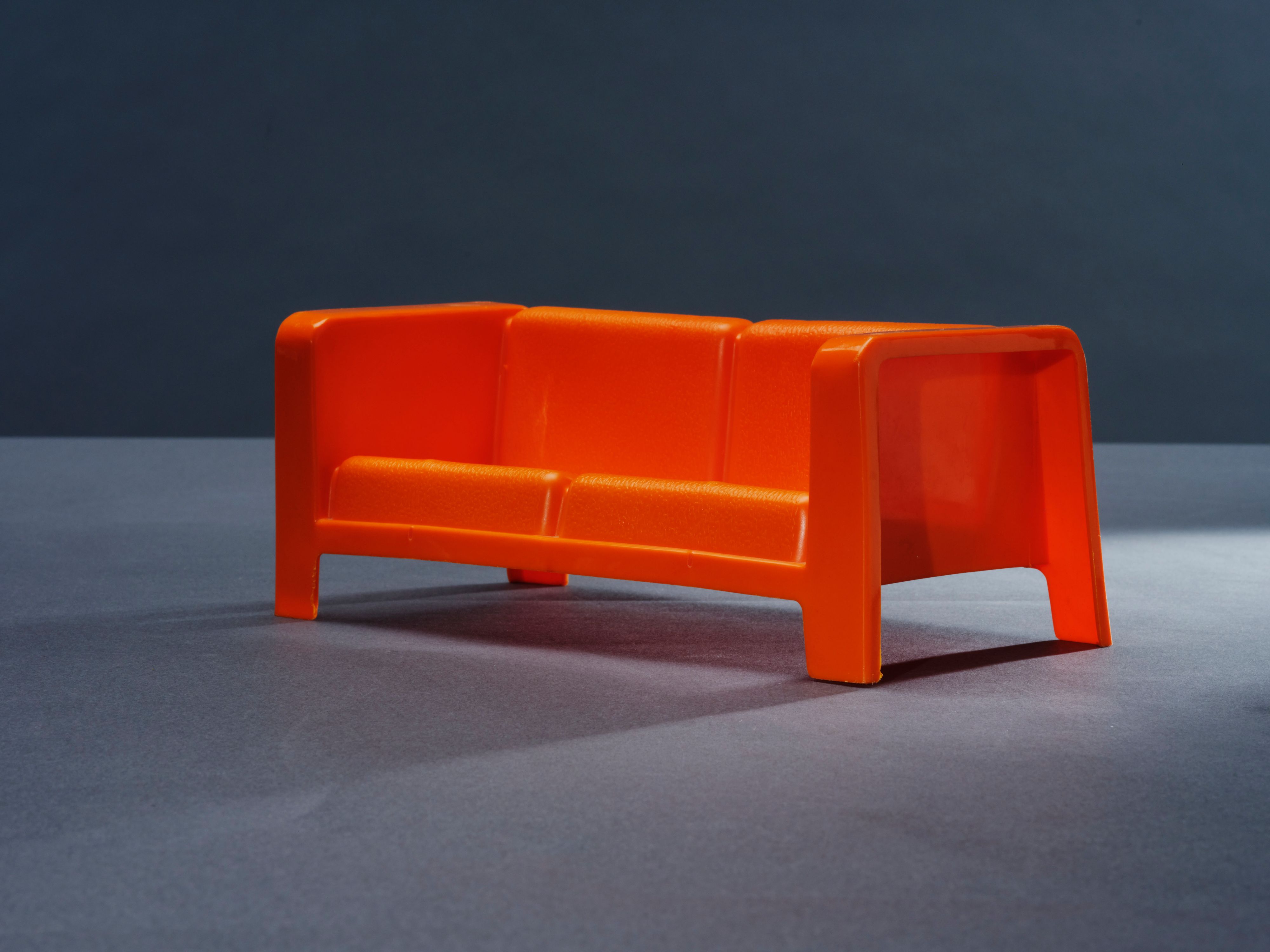
Sofa from Barbie's 1974 Dreamhouse photographed by Evelyn Pustka for PIN–UP
1974
In the early 1970s, Barbie’s architectural aspirations sky-rocketed, turning her modest ranch house into an imposing, 3.5-foot-tall mini-tower. Its slab-and-column structure is a near-perfect assimilation of Le Corbusier’s Maison Dom-Ino, while the eclectic interior décor resembles the period’s so-called “fern bars,” full of potted plants and Tiffany lamps. The boho charm of Barbie’s new pad also smacks of the attic apartment on The Mary Tyler Moore Show, which canonized single-girl cool in the early 1970s. The funky-folk references were balanced by groovy accents in high-tech plastics, like Barbie’s cantilevered chairs, which fuse Marcel Breuer’s iconic Cesca with Verner Panton’s classic chair.
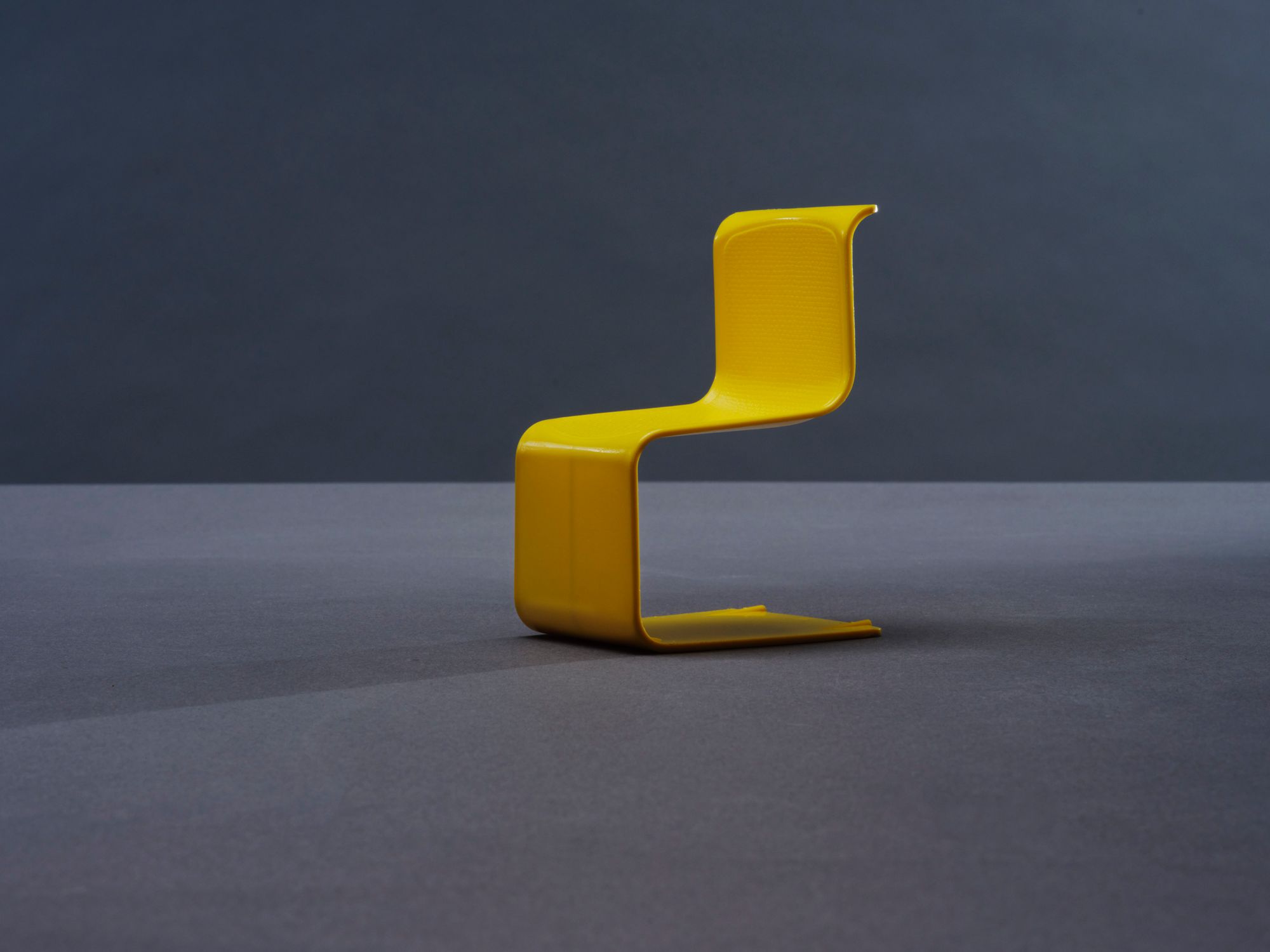
Barbie’s 1974 cantilevered chairs, which fuse Marcel Breuer’s iconic Cesca with Verner Panton’s classic chair. Photographed by Evelyn Pustka for PIN–UP.

Barbie’s 1974 Dreamhouse photographed by Evelyn Pustka for PIN–UP
1979
With its pitched, tiled roof, Barbie’s late-70s Dreamhouse is as close as any in the series to a classic dollhouse, but its emphatic triangular form also reads as a timely take on Post-modernism, environmentalism, and the growing suburbanization of America. It bears more than a passing resemblance to Charles Moore’s 1970s Sea Ranch development, promising a similar atmosphere of playfulness and ease. Even Barbie’s furniture puts the accent on flow and fun, with the slouchy sofa and chair recalling Michel Ducaroy’s era-defining Togo couch. The home’s autumnal color palette indicates that Barbie’s tastes have mellowed and matured, the orange-red roof, harvest-gold floors, and avocado-green furnishings forming a sunny symphony of 70s hues, while the skylights, sliding doors, and cheery flower boxes provide a seamless blend of in- and outdoor living.
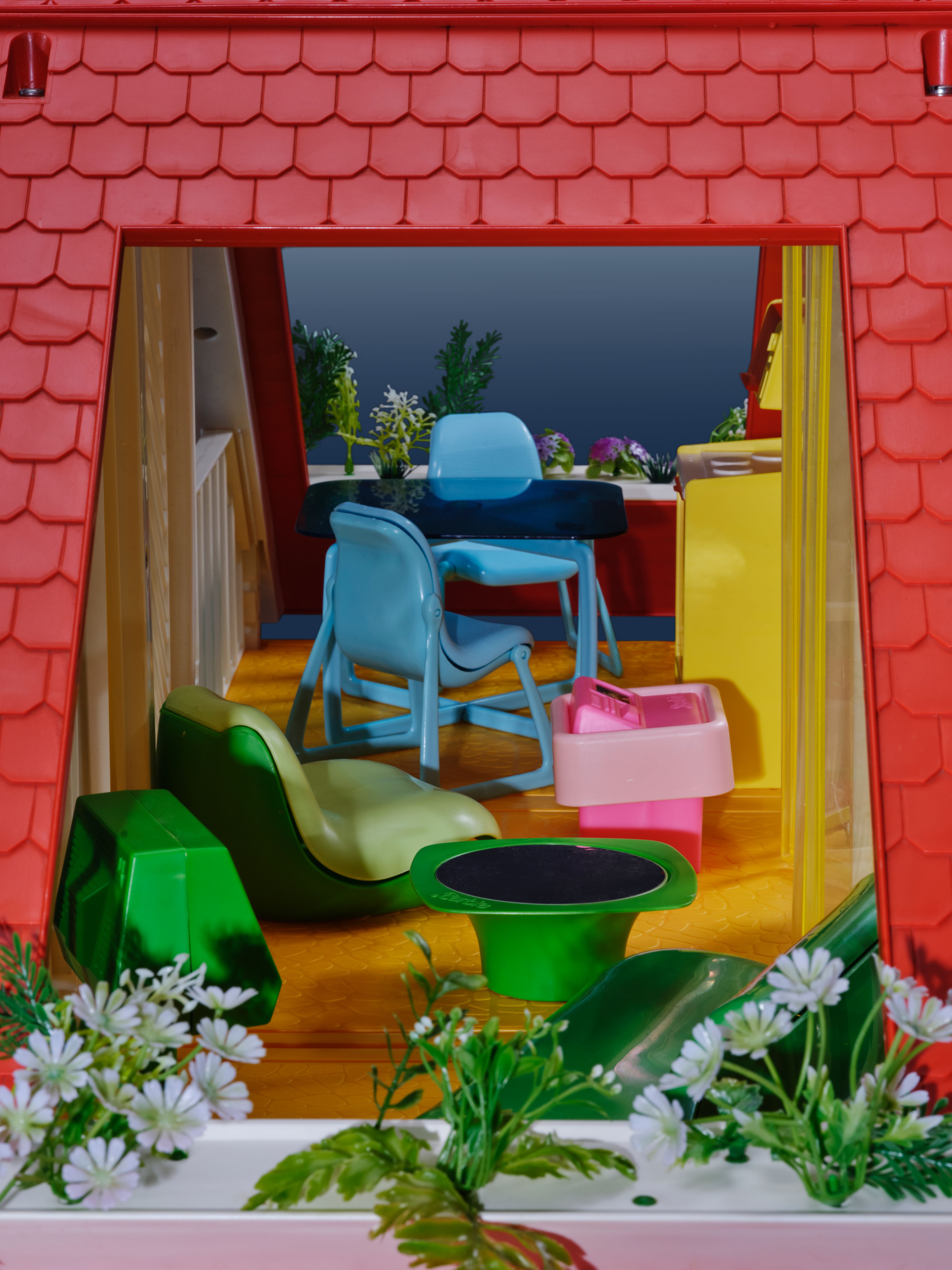
Barbie’s 1979 Dreamhouse photographed by Evelyn Pustka for PIN–UP
“We take inspiration from everywhere. It goes through that process of becoming what we call ‘toyetic,’ applying the Barbie filter and turning it into a toy. The perfect juxtaposition is when relatability meets hyperreality.” — Kim Culmone, Senior Vice President of Design, Mattel
1990
The 1990 Magical Mansion signals a shift in Barbie’s aesthetic sensibility from relatable, practical elegance toward an increasingly fanciful flourish. The pastel-hued home — dubbed “magical” because of its battery-powered ringing telephone and doorbell and light-up fireplace and lantern — was the biggest yet, 3 feet tall by 4 feet wide and equipped with more intricate detailing than any previous Barbie house. While there’s a resemblance to the classic Victorian dollhouse, it comes with a heavy overlay of truly 90s PoMo eclecticism: Doric columns, craftsman exterior details, and two window typologies (Venetian-Palladian and Tudor-style bay). Inside, the rose-patterned wallpaper is reminiscent of the period’s floral-heavy romanticists like Laura Ashley and Ralph Lauren Home.
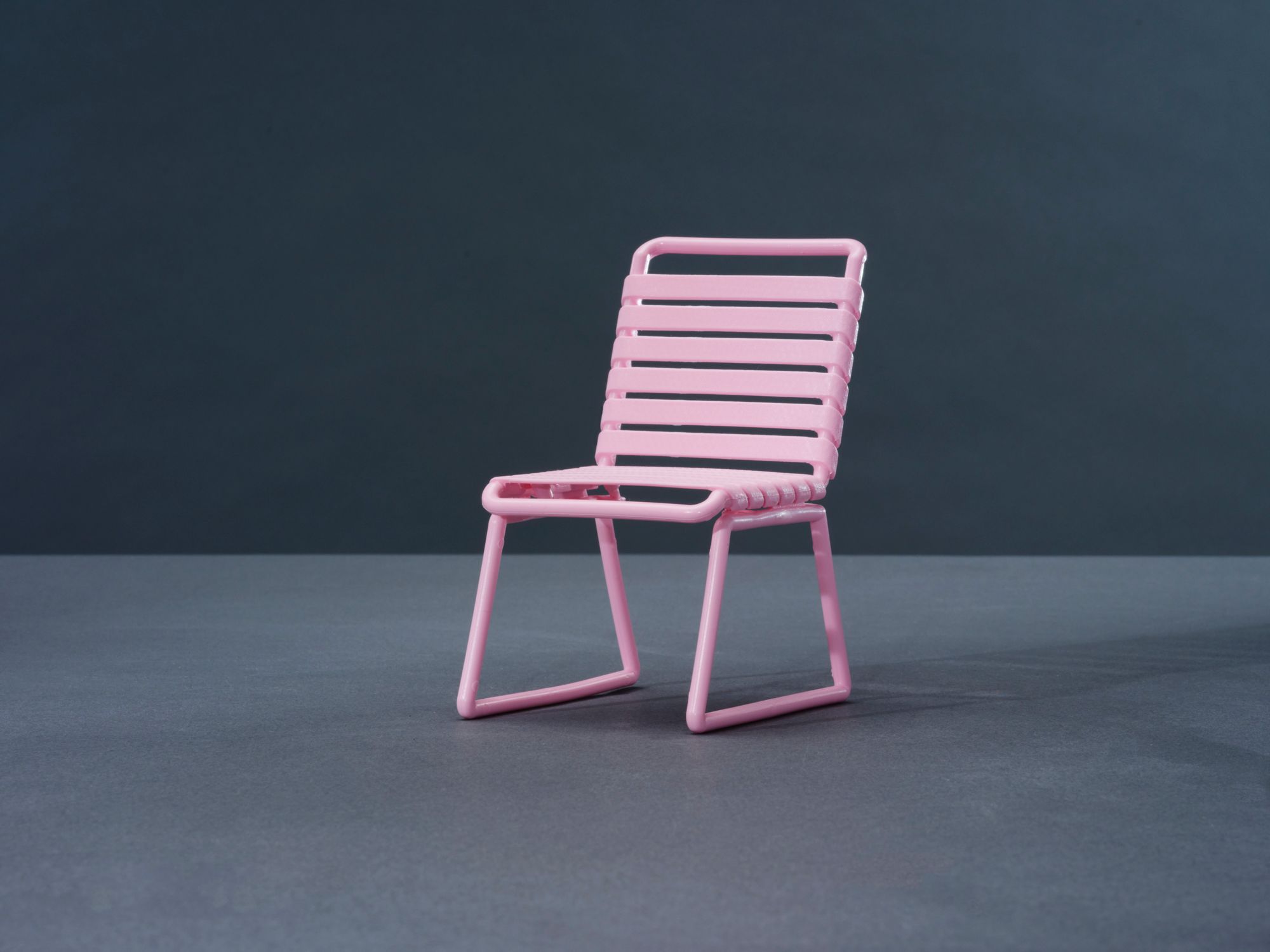
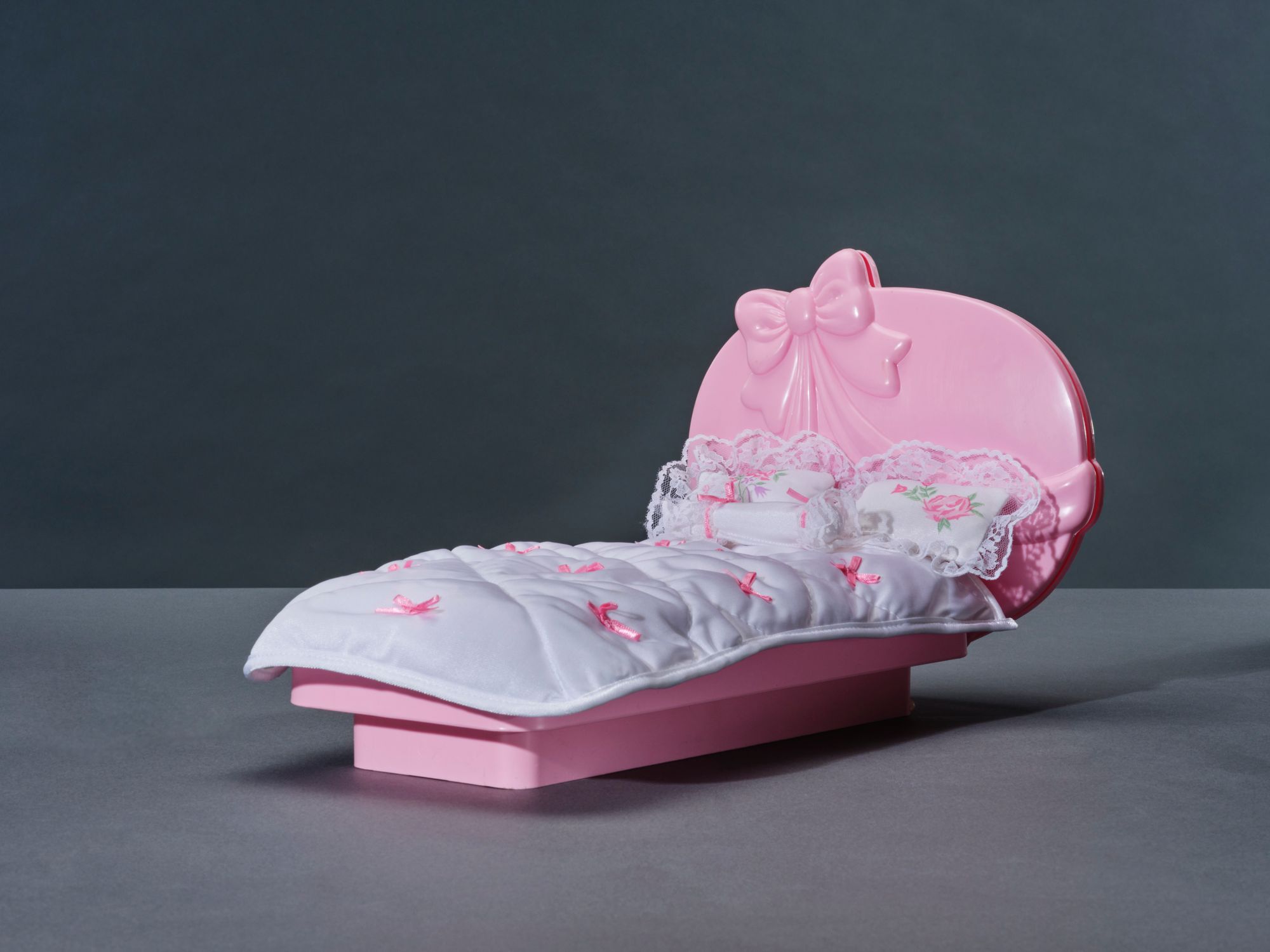
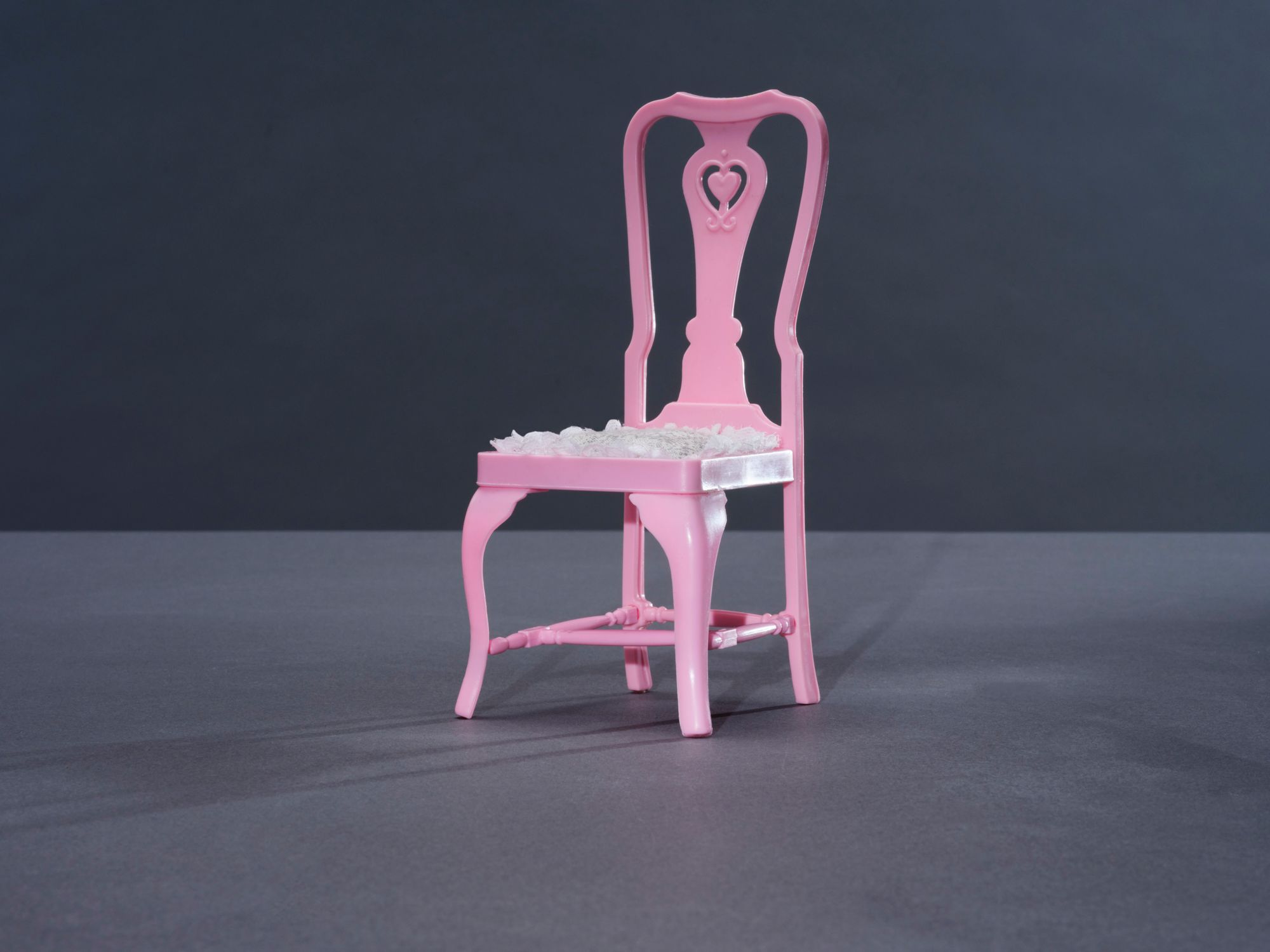
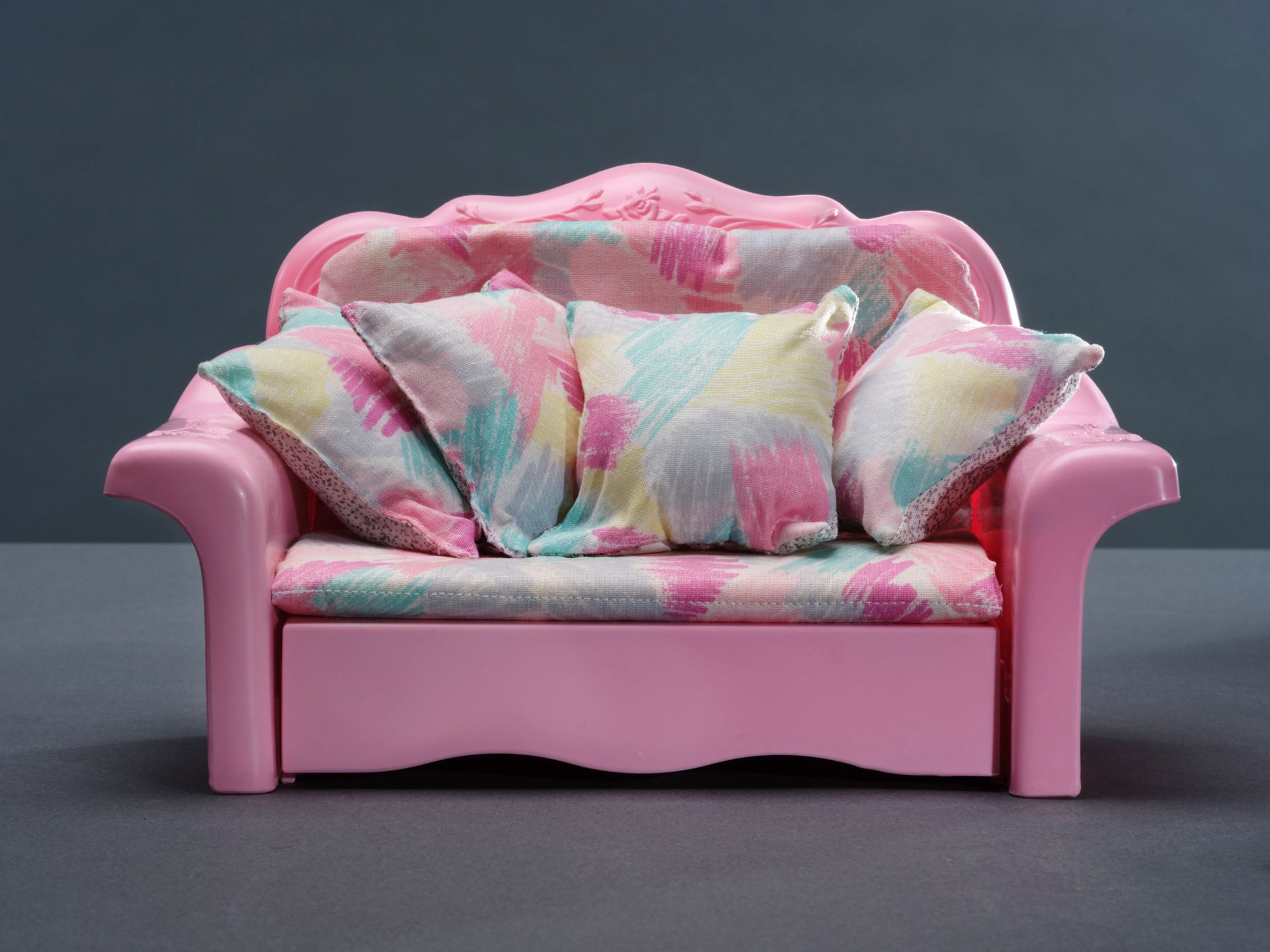
“What always struck me about Barbie’s bigger purchases — her cars, her houses, her pools — is that they were apparently for her and Ken to share, and yet they were not. In the house ads I remember Ken coming over, maybe ringing the doorbell, definitely a visitor, not a tenant, which just says they aren’t serious yet, but in effect makes Ken homeless. He’s always ‘coming over,’ and Barbie is not changing her décor for him, not ever giving him the signal that she could make room for him there.” — Natasha Stagg, author and cultural critic
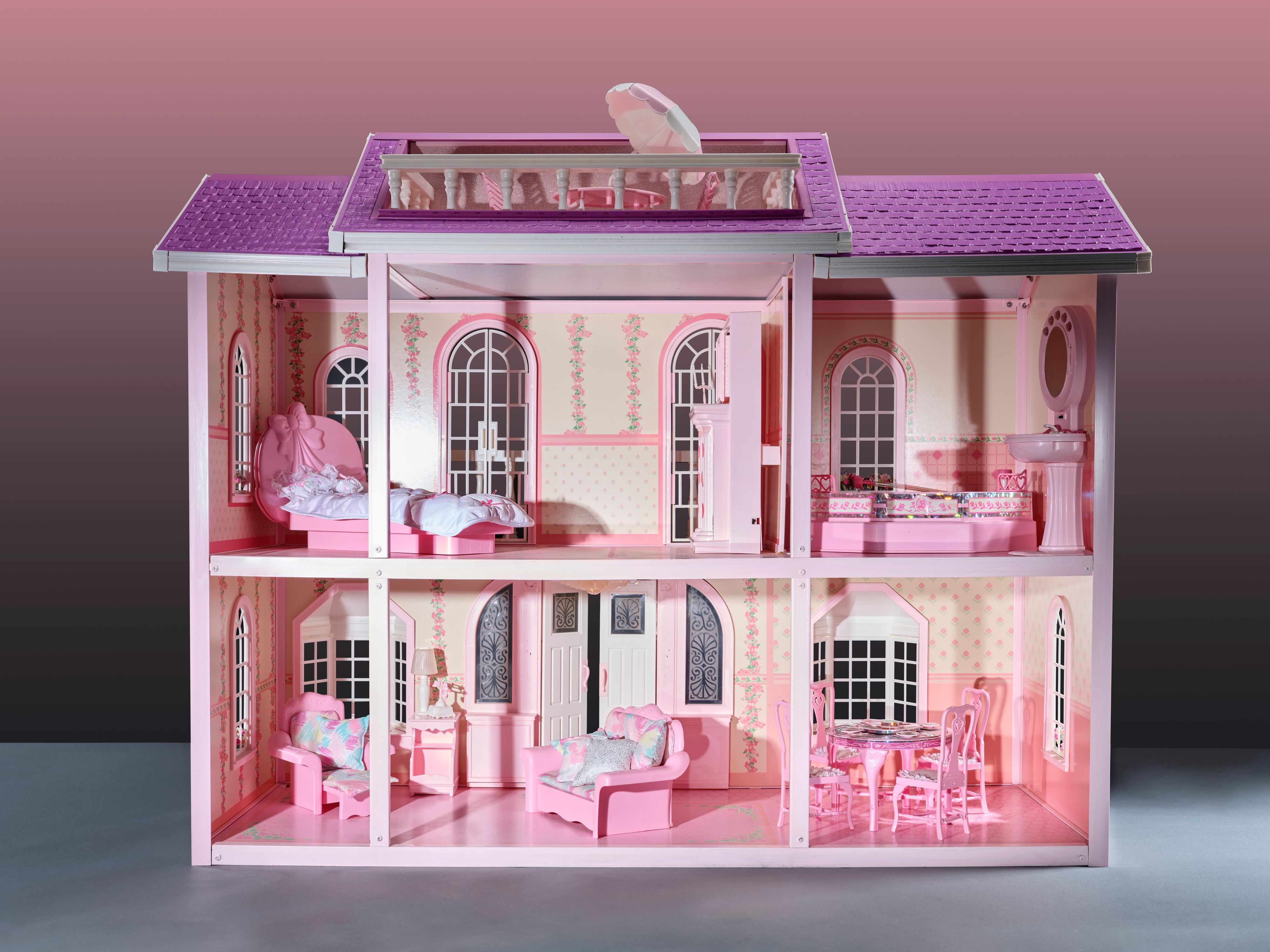
Barbie’s 1990 Dreamhouse photographed by Evelyn Pustka for PIN–UP
“Any individual Barbie house is not so much a building in miniature as it is a compilation of half-understood, second-order impressions about buildings. It’s the memory of a kitchen in a cartoon, or a breakfast nook in a Sunday supplement; it’s the sashay of a dress down a carpeted stair and the thump of a stereo speaker in a sister’s bedroom. The houses are the ultimate epiphenomena of American childhood.” — Ian Volner, author and architecture critic
2000
Though being released on the cusp of the new millennium, the 2000 Dreamhouse is decidedly retro. While the furniture at first glance also seems olde worlde, upon closer inspection the all-plastic pieces — especially the white chaise lounge in the Second Empire style — can also be read as very contemporary, similar to the translucent-polycarbonate chair line debuted by Philippe Starck in the late 90s. The 2000 Dreamhouse is the most conservative statement in Barbie’s real estate portfolio, yet it’s occasionally tempered by the era’s freewheeling, “girl power” sense of femininity.
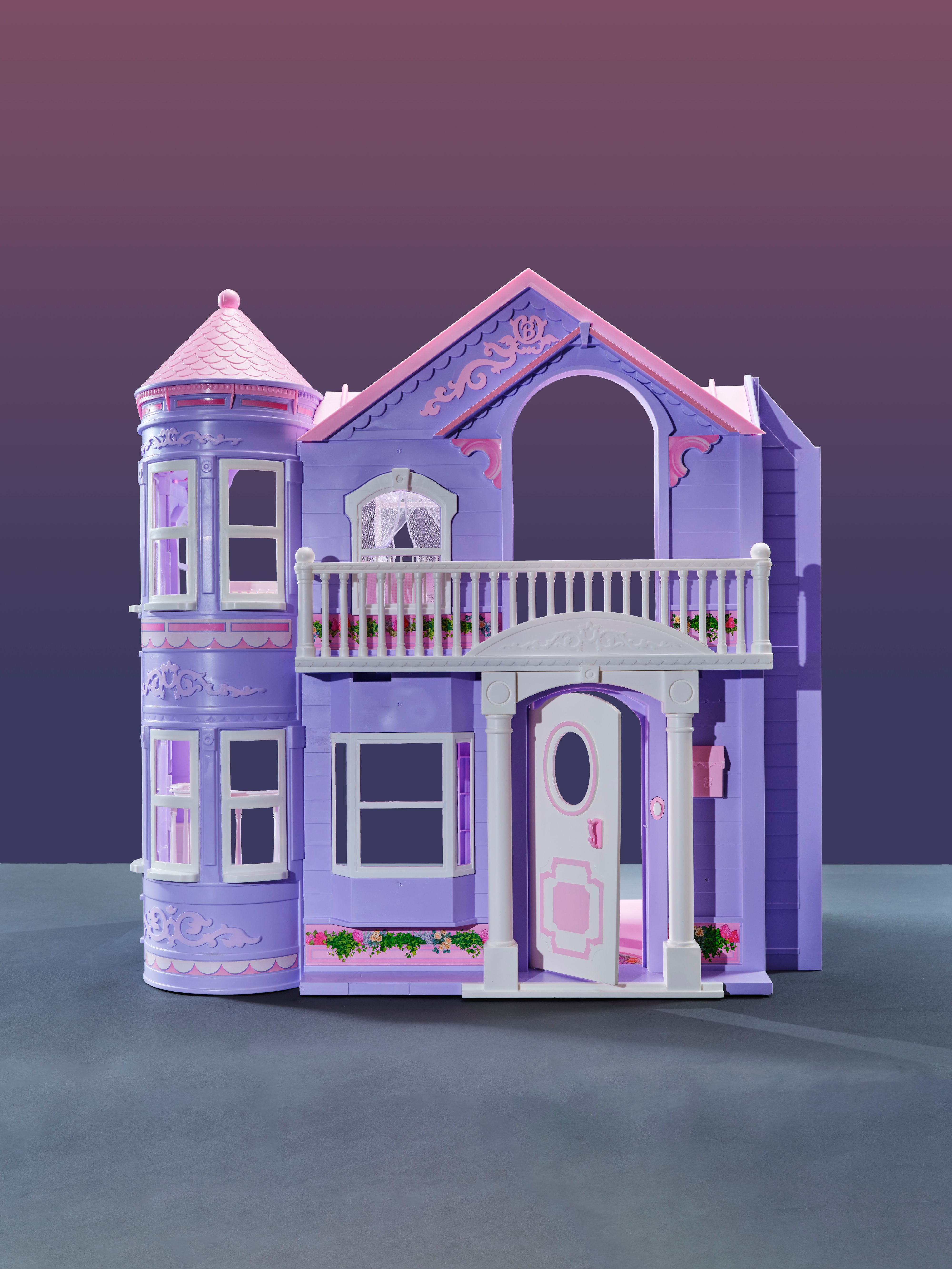
Barbie’s 2000 Dreamhouse photographed by Evelyn Pustka for PIN–UP
2021
In the early 2010s, Barbie became more inclusive and diverse, a shift reflected in her Dreamhouse, which focused on uncluttered space to allow for unbridled fun for Barbie and her friends. Partly inspired by the burgeoning realm of social media and the algorithmic trends that drive today’s digital platforms, Barbie’s sleek, airy new space offers a variety of photogenic backdrops perfect for Zoom and video storytelling. Versatility is key, with a moveable pool, a barbecue grill that reverses into a dessert buffet, and an entertainment center that reveals a pet play area. The three-story Dreamhouse is also the first to be fully wheel-chair accessible. With so much attention paid to fun, inclusivity, and the experience economy, no wonder the Dreamhouse remains the envy of the toy aisle as the world’s best-selling dolls’ home.

Barbie’s 2021 Dreamhouse photographed by Evelyn Pustka for PIN–UP
“Why isn’t the Barbie Dreamhouse creepy? Dollhouses of all other kinds have always struck me as sinister, probably because they reached maximum popularity in the Victorian era. But then, enter the colorful, commercial, commodity-laden, trendy, cardboard and plastic, industrially produced Barbie fantasy home — a house not of terrors but of dreams!” — Elvia Wilk, author and cultural critic
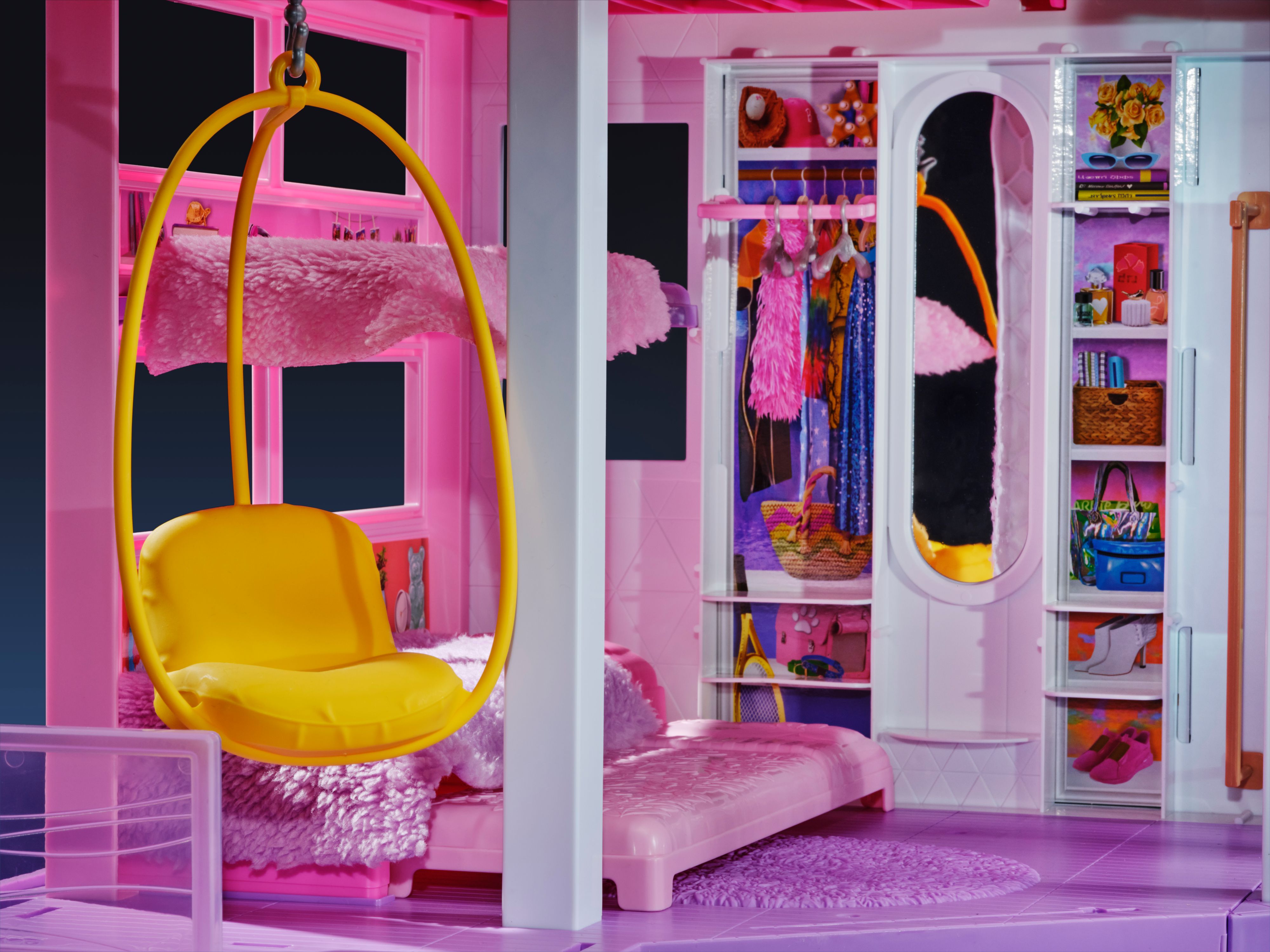
Interior of Barbie’s 2021 Dreamhouse photographed by Evelyn Pustka for PIN–UP